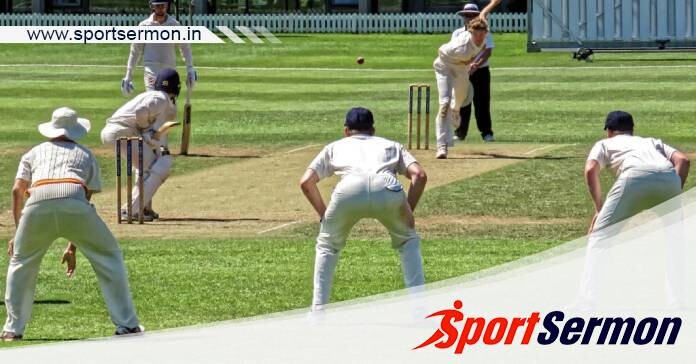T20 Cricket Fielding Restrictions: T20 cricket is an exciting, condensed version of the game with lots of heavy-hitting and fast-paced action. It is the style of cricket that is most likely to draw in new players due to the variety of stroke play and talents displayed. While hitting as many boundaries as you can and outscoring the opposition in 120 balls is a relatively simple objective, the subtleties of test-match cricket may often be confusing to the uninitiated observer. It is understandable why the T20 format has been selected by cricket’s governing bodies, such as the ICC, to spearhead the sport’s expansion into new nations and communities. Scroll down to read T20 Cricket Fielding Restrictions.
T20 Cricket Fielding Restrictions
T20 is heavily dependent on offering the most entertainment possible; hence, regulations must be implemented to prevent teams from playing extremely conservatively. Consider this: if the fielding captains were permitted to position nine fielders on the boundary, would T20 cricket be nearly as entertaining to watch? I’ll respond to that for you: not!
Thus, this page will cover all the details if you’re curious about the precise limitations imposed on fielding sides during a T20 match. I’ll go over the limitations and how they change over time. In addition, I’ll go over some more broad guidelines that are applicable for the duration of the inning.
What Are the Fielding Restrictions in T20 Cricket?
Up to two fielders may stand outside the 30-yard line in the first six overs of an inning. For the remainder of the inning, a maximum of five players may remain outside the circle after this. Furthermore, at no time during the innings may more than five fielders be on the left side of the field.
It is now considerably simpler for batsmen to start an inning strong and score runs because of these limitations. An innings with a high score in the first six overs usually has more boundaries and is therefore more entertaining for the spectators. It also establishes a wonderful platform for the remaining batters to follow.
The final regulation, which is less well-known, states that anytime the ball is bowled, there can only be two fielders behind square on the leg side. This regulation helps to prevent bowlers from only pitching short balls when there are a lot of fielders squarely behind them on the leg side. It applies to all cricket formats, not just T20. If bowlers were permitted to do this, batsmen would be forced to consistently attempt difficult shots like the hook and pull, with many fielders positioned to capture the ball if they made a mistake.
Because of this restriction, bowlers still run the danger of being caught bowling a short ball because an experienced batter may readily find openings in the leg side between the fewer fielders.
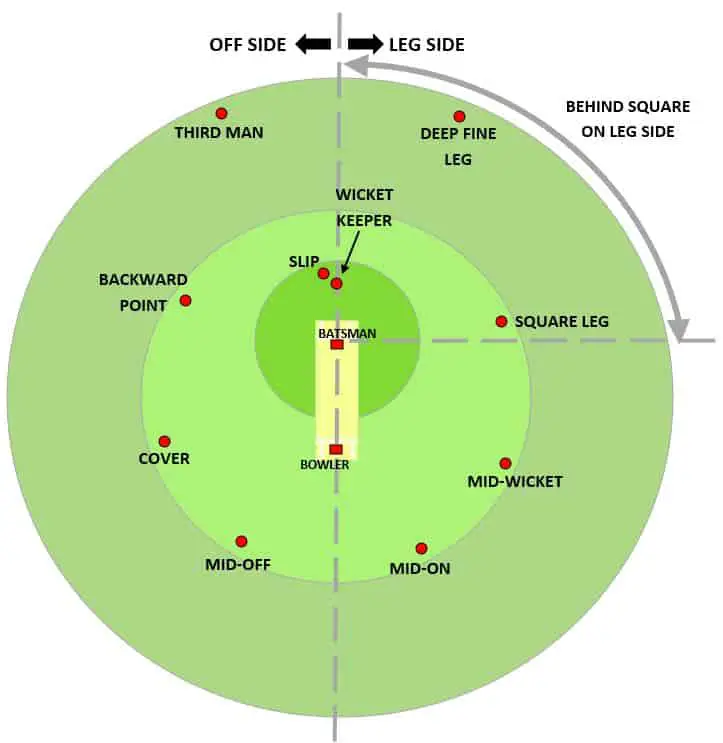
A typical field that the bowling captain will establish for the first six overs of the innings is shown in the diagram above. The majority of the field players are concentrated in the light green 30-yard circle. The fact that there are just two fielders on the boundary in the diagram satisfies the regulation that states that during this time, only two fielders may be outside the 30-yard circle. Additionally, you can observe that there are only 4 fielders on the leg side (deep fine leg, square leg, mid-wicket, and mid-on), meeting the requirement that there be a maximum of 5 fielders! Lastly, take note of the fact that at deep fine leg and square leg, there are just 2 fielders behind square on the leg side of the field.
A possible field that the fielding captain might select to employ later in the innings is depicted in the diagram below. Consider Jofra Archer, for instance, who is set to bowl the 18th over of the innings. Since the batsmen at the crease will be attempting to go all out at this point, the fielding captain would likely place five fielders on the boundary in the batsmen’s preferred hitting zones in an attempt to silence them.
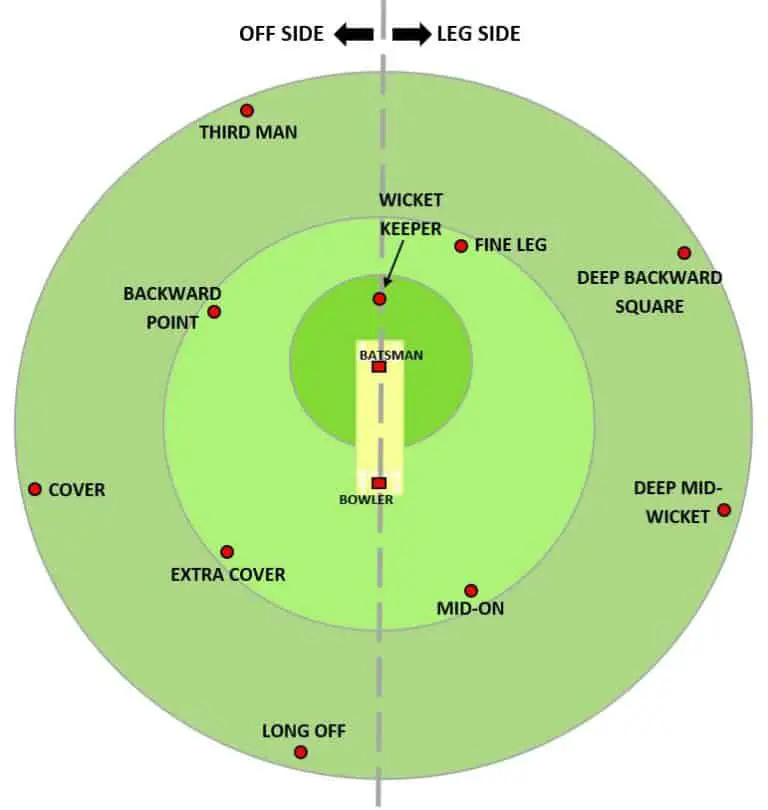
What Happens If Fielding Restrictions Are Ignored or Broken?
The persons in charge of figuring out whether fielder placement mistakes have been committed during a game are the on-field umpires and the TV replay umpires. They will keep an eye on the fielders’ precise positions as soon as the ball leaves the bowler’s hand to do this. The umpires will automatically call and signal a no-ball if, at this stage, any of the fielding regulations are being broken. A no-ball will be called each time a fielding limitation is violated.
As previously stated, umpires will only signal a no-ball if fielding limits are breached during the bowling of the ball. This implies that fielders may be in non-compliant positions before the ball is bowled. But by the time the ball is delivered, it is their responsibility to position themselves. Consider the following scenario: the fielders are positioned as indicated in the picture below, and the bowler is about to initiate their run-up in the first over of a Twenty20 competition. Although there is only a maximum of two fielders permitted, as you can see in the diagram, there are three fielders outside the 30-yard circle!
Since the fielder to whom the yellow arrow is pointing should be inside the 30-yard circle at mid-off, they must move rapidly to ensure they are in the right spot when the ball is delivered. The umpire will call and indicate a no-ball if they are unable to enter the circle in time.
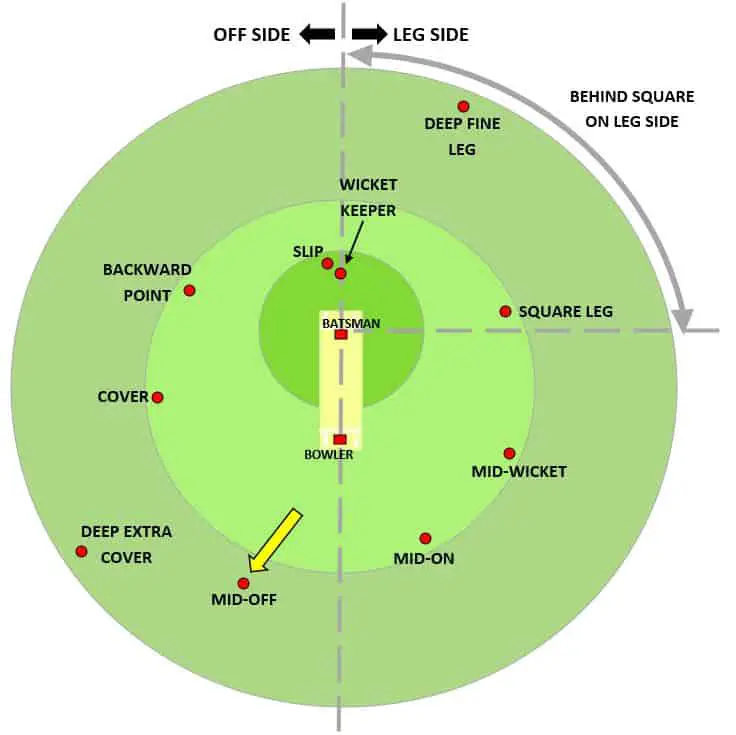
How Many Fielders Are There In Total?
The fielding team in Twenty20 cricket will have eleven players on the field, but not all of them are considered fielders. The bowler for this over will be one of the eleven players, and the wicketkeeper will be another. As a result, only nine fielders can change places on the field from ball to ball.
How Many Fielders Are Allowed On The Off Side In T20 Cricket?
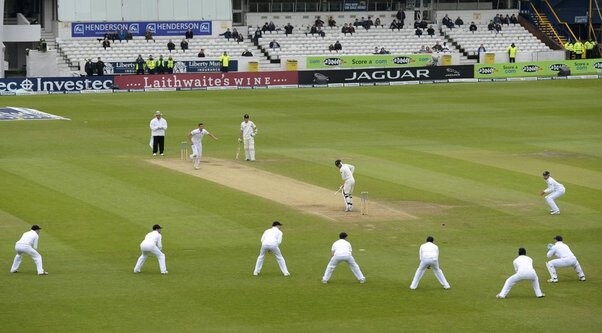
I’ve already discussed in this post that a maximum of five fielders may be on the leg side for any given delivery. Many are left wondering if the number of fielders permitted on the offside is subject to a similar regulation.
No, there isn’t, is the response to this. When in the field, a T20 team is free to place as many fielders as they like on the offside! It is always a good idea for the fielding team to keep a good number of fielders on the leg side of the field to guard against this, as the leg side of the field is a big target for batsmen looking to smash boundaries.
In a Twenty20 match, positioning six or more fielders on the off side is generally not the best idea unless you have a bowler who can often bowl wide of the off stump, making it difficult for the batsman to knock toward the leg! It should be emphasized, though, that even with difficult lines and lengths to bowl, the most proficient batsmen will likely still manage to strike through the leg side. Thus, it’s usually advisable to distribute your fielders fairly evenly across the legs and offsides!

